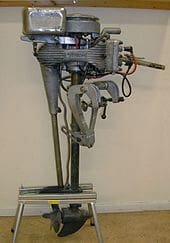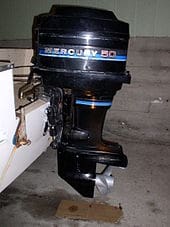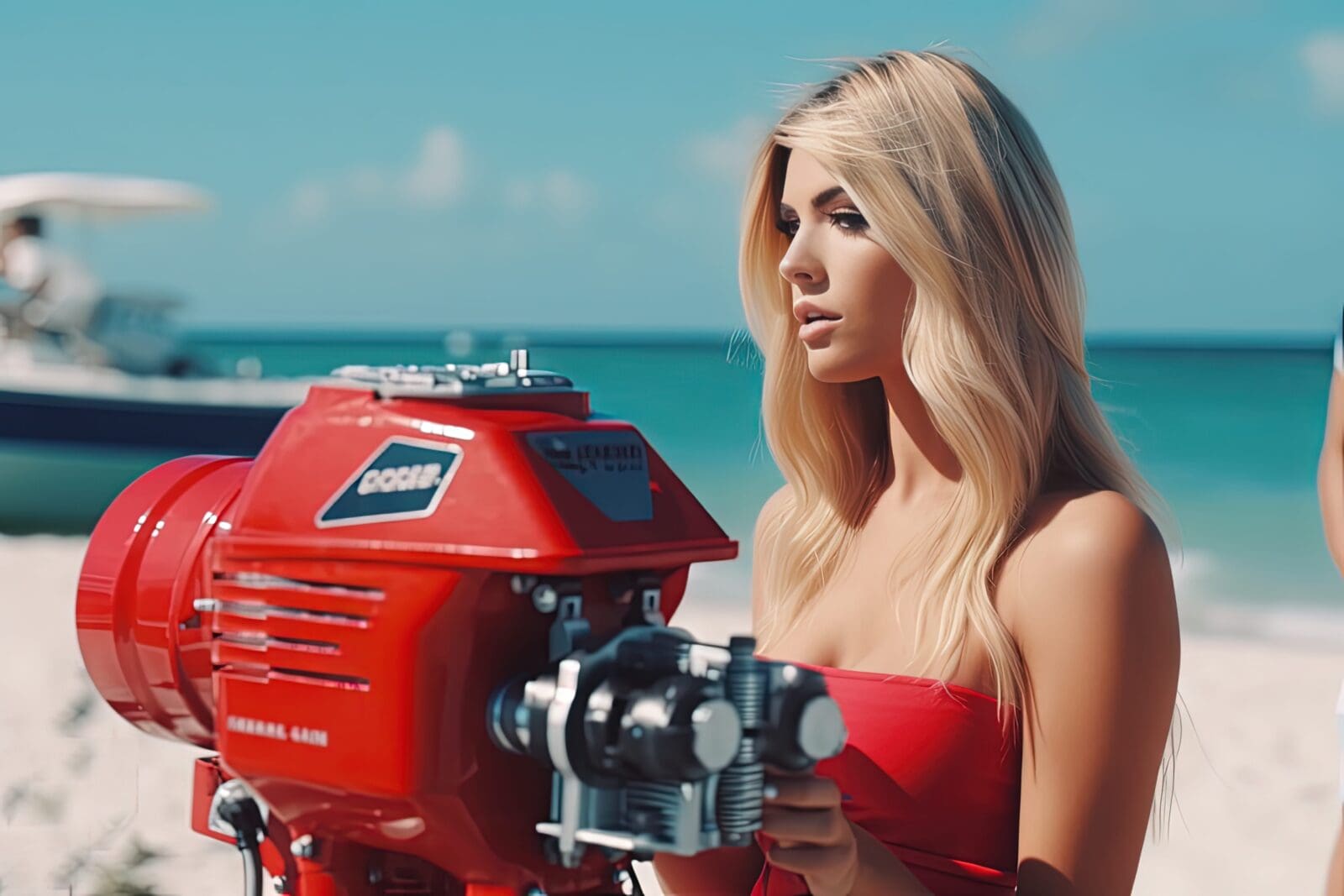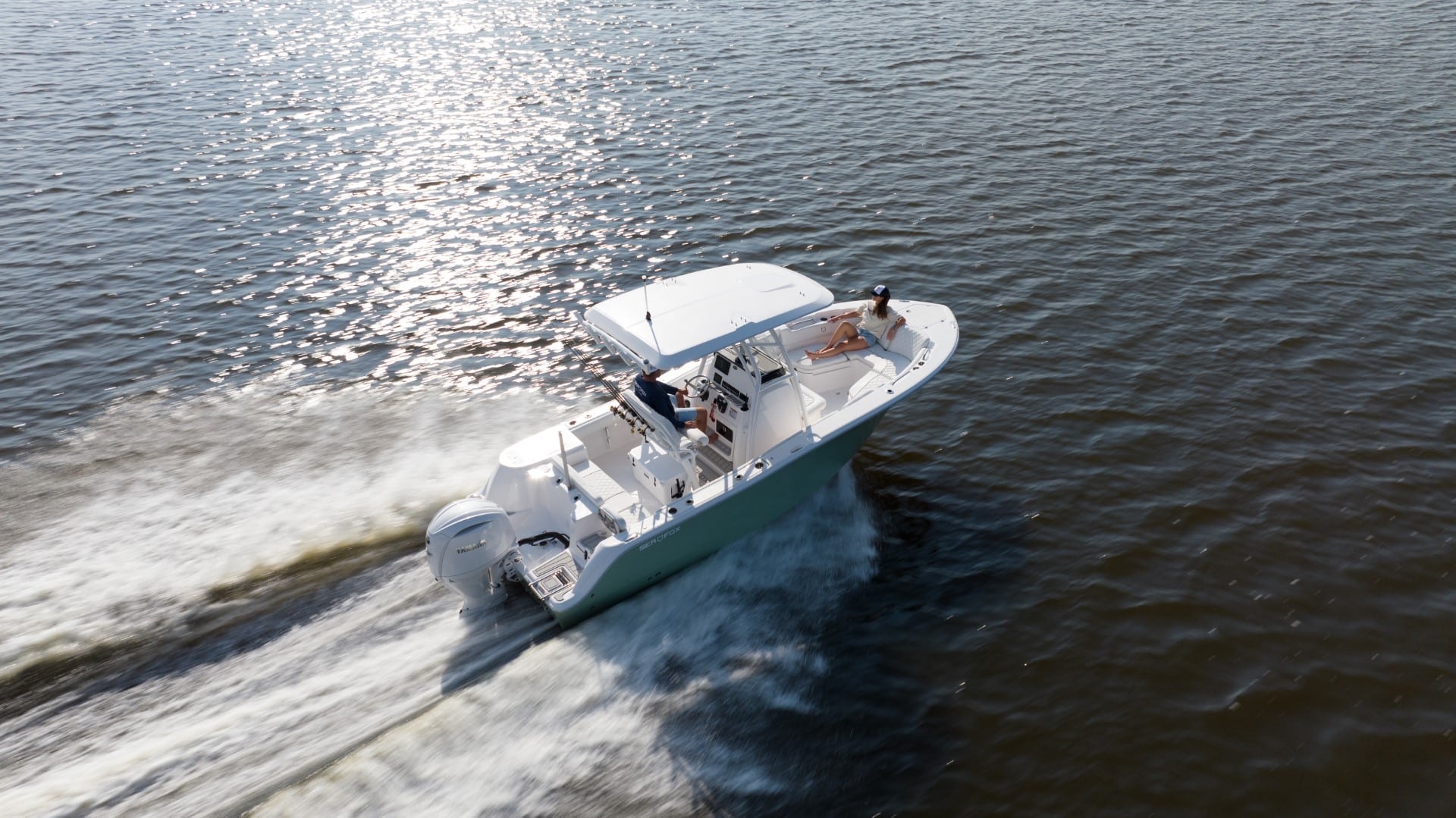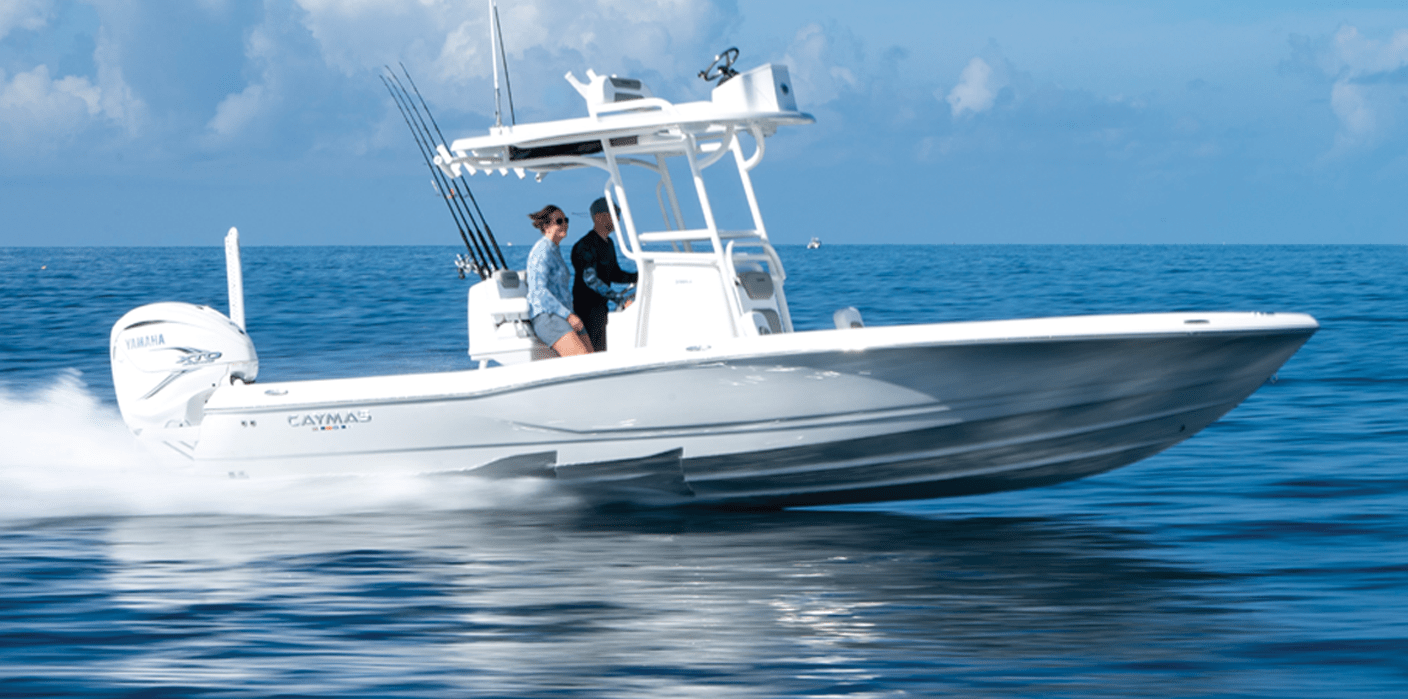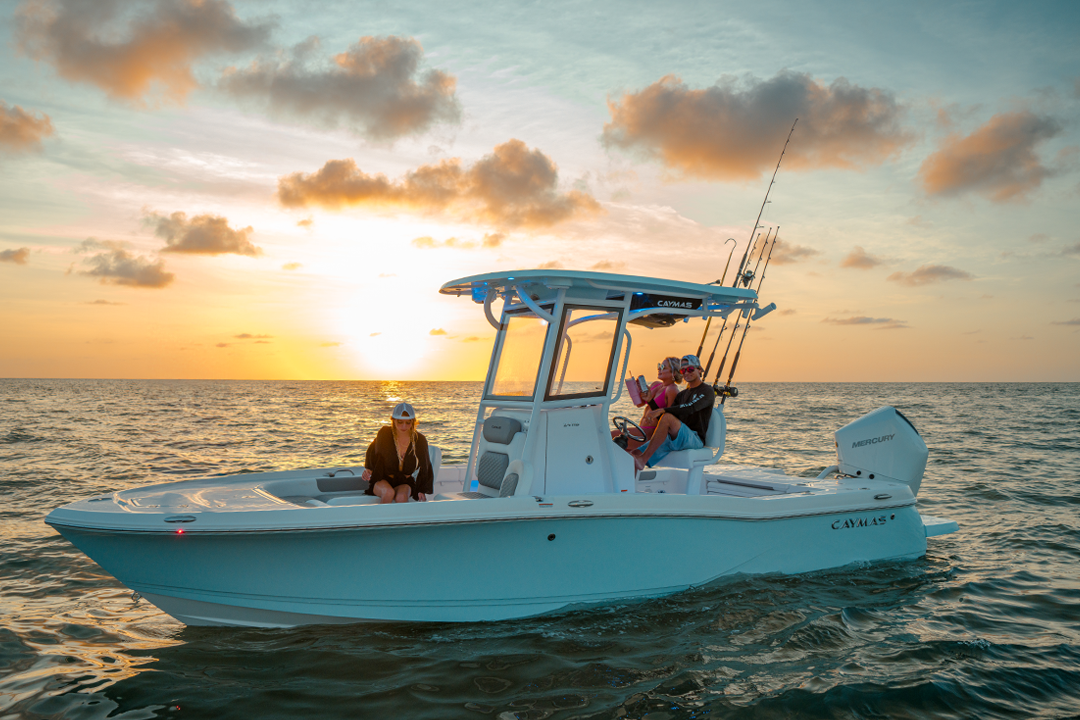An outboard motor is like the life of the party for boats! It’s a portable, self-contained propulsion system, “sittin’ pretty” on the back of a vessel’s stern. This little engine-that-could brings together the propeller, gearbox, and all that jazz, making it a one-stop-shop for boat thrust and smooth moves on the water.
Basically,, an outboard motor is an engine on the back of a boat. However, unlike the engine under the hood of your car, an outboard motor is mounted to the outside of a boat. Hence the reason it’s called an outboard motor. Generally these motors have propellers on them that, when submerged and running, generate thrust to accelerate and decelerate the vessel. When the motor is running and the propellers are engaged, all anyone has to do is pivot the motor(s) to either direction to turn the ship in either direction.
Although there are other types of motors, inboard motors are most commonly compared to inboard-outboard motors when being explained.
Marine 101: Everything about Outboards
Have you ever wondered what powers your boat? or what exactly is an outboard motor? What enables you to explore the open waters? The answer lies in the fascinating world of outboard motors. Let’s unravel the mystery behind these marine powerhouses, their components, advantages, and popular brands. Get ready to set sail as we dive into the exciting realm of outboard motors!
Table of Contents:
What is an Outboard Motor?
Components of an Outboard Motor
Advantages of Outboard Motors
Trimming the Outboard Motor
Why Trim Matters
How to Trim Your Outboard Motor
Popular Brands and Models
Understanding It All
What is an Outboard Motor?
An outboard motor is a self-contained propulsion system used to power boats. They are mounted on the exterior of a boat’s transom (the flat surface at the stern of the boat) and are typically used for powering small to medium-sized vessels. Outboard motors are versatile and easy to maintain, making them a popular choice for recreational boating enthusiasts.
Components of an Outboard Motor
Although it’s not necessary to memorize before going out on the water, we should first start with briefly and broadly breaking down what an outboard motor consists of. Outboard motors consist of several key components that work together to propel your boat through the water. These include:
Engine: The engine, being the heart of the outboard motor, generates power. Outboard engines can be either two-stroke or four-stroke, each with its advantages and disadvantages.
Propeller: The propeller converts the engine’s power into thrust, pushing the boat through the water. Various propeller designs cater to different boating needs, from high-speed performance to fuel efficiency.
Lower Unit: The lower unit houses the gearbox, which transfers power from the engine to the propeller. Additionally, it contains the drive shaft, water pump, and cooling system.
Steering System: Outboard motors use either a tiller handle (for smaller engines) or a remote steering system (for larger engines) for steering. This system enables the motor to swivel, allowing you to change direction.
Advantages of Outboard Motors
Next up, the advantages of outboard motor propulsion for your boat. Outboard motors offer several benefits over other systems:
Ease of Maintenance: Outboard motors are easier to access and work on, thanks to their external mounting position.
Space Saving: Since outboard motors are mounted outside the boat, they free up valuable interior space.
Maneuverability: Outboard motors offer excellent maneuverability, as they can be tilted up or down and rotated 360 degrees.
Fuel Efficiency: Modern outboard motors are designed to be more fuel-efficient than their inboard counterparts. Check out Yamaha’s guide on the fuel efficiency of outboard motors.
Trimming the Outboard Motor
Another important aspect of using an outboard motor is understanding how to trim it properly. Trimming refers to the angle adjustment of the motor relative to the boat’s transom, which affects the boat’s performance, fuel efficiency, and ride comfort. Learning how to trim your motor correctly can enhance your overall boating experience.
Why Trim Matters
- Performance: Proper trimming allows the boat to reach its optimal performance, helping it achieve better top-end speeds.
- Fuel Efficiency: When the motor is trimmed correctly, it reduces the amount of drag in the water, resulting in improved fuel efficiency.
- Ride Comfort: Trimming the motor can minimize the boat’s tendency to porpoise (oscillate up and down) and provide a smoother ride, especially in choppy waters.
How to Trim Your Outboard Motor
Most modern outboard motors come with a power trim and tilt system, which enables you to adjust the motor’s angle with the push of a button. Here’s a general guide on how to trim your motor:
- Start at the lowest trim position: Begin with the motor fully trimmed in (closest to the boat’s transom) when you start the boat.
- Accelerate and monitor performance: As you accelerate, observe the boat’s performance, bow rise, and any signs of porpoising.
- Trim the motor out: Gradually trim the motor out (away from the boat’s transom) to find the optimal angle. As you trim out, the boat will typically level out, reducing drag and increasing speed. If you notice the boat starting to porpoise or lose speed, trim the motor back in slightly.
- Adjust as needed: Continually adjust the trim depending on the conditions, speed, and the number of passengers on board to maintain optimal performance and comfort.
Keep in mind that the optimal trim position varies depending on the boat, motor, and water conditions. With practice, you’ll learn how to trim your motor effectively and enhance your overall boating experience.
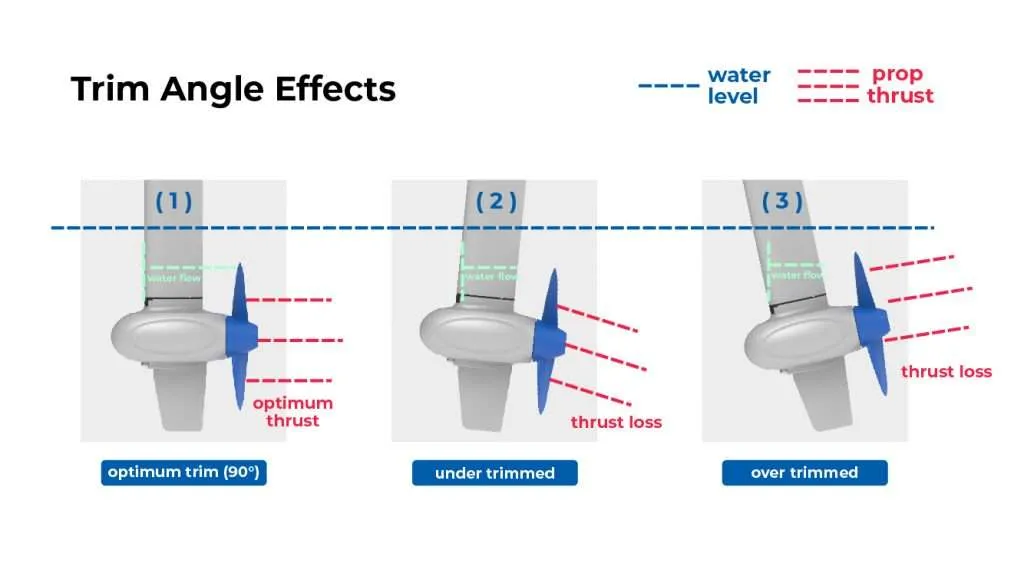
Popular Brands and Models
Lastly, we’ll go over a handful of the most popular brands that manufacture outboard marine motors. Several reputable outboard motor manufacturers are on the market, each offering a range of models to suit different boating needs. Some of the top brands include:
- Yamaha: Yamaha is a renowned name in the marine industry, offering a wide selection of reliable and efficient outboard motors. Their popular models include the Yamaha F25 and the high-performance Yamaha VMAX SHO.
- Mercury Marine: Known for their innovation and performance, Mercury outboards offer a diverse range of options. Top models include the Mercury FourStroke series and the powerful Mercury Verado.
- Honda: Honda outboard motors are famous for their reliability and fuel efficiency. Popular choices include the Honda BF2.3 and the versatile Honda BF150.
- Suzuki: Suzuki outboards, known for their advanced technology and performance, feature some noteworthy models such as the lightweight Suzuki DF6A and the powerful Suzuki DF350A.
Understanding It All
In conclusion, understanding what an outboard motor is and how it functions is essential for any boating enthusiast. These engines offer numerous advantages, including ease of maintenance, space-saving design, and excellent maneuverability. With a wide variety of brands and models available, you’re sure to find the perfect outboard motor to power your next boating adventure. Now that you’re armed with this knowledge, it’s time to set sail and explore the open waters with confidence!
Happy boating!
